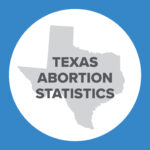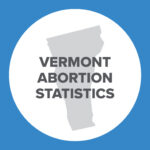Protecting Women from Coerced Abortions: The Important Role of Pregnancy Help Centers

This is Issue 78 in the On Point Series.
The Supreme Court has made it abundantly clear that state governments have a powerful interest and even duty in ensuring that the decision to have an abortion is voluntary, informed, and uncoerced.[1] But studies show that between 30 and 60 percent of women in the U.S. who seek abortions do so because of pressure from another person—often the father of the child, the woman’s parents, her family members, her friends, or an employer.[2] In one study, 64 percent of women who had undergone an abortion reported that they had been pressured to do so.[3] One provider of post-abortive counseling reported to the South Dakota Task Force to Study Abortion that, in any given year, 75-85% of women who received post-abortive counseling reported that “they felt they were misled by the abortion clinics and that their decisions were uninformed and, in many ways, coerced.”[4]
Abortion providers do little, if anything, to ensure that a woman’s choice to receive an abortion is uncoerced and fully informed. Many women who received abortions testified that abortion providers did not fully disclose how an abortion was performed and did “not disclose the direct injury to the child that leads to its death” or “the psychological and physical risks to the mother.”[5] Many women reported they were not fully informed of the risks of abortion to their own health, including the dangers of the medical process used, emotional problems, and other after-effects.[6]
Even the admissions of Planned Parenthood agents show that many abortion providers make active misrepresentations of fact to pregnant women regarding the physical and emotional risks posed by abortion.[7] All too often, abortion providers “place the burden upon the mothers to discover material facts on their own,” without meeting with the woman before the procedure was scheduled to take place.[8] And when women arrive at an abortion clinic, they are “pressured into making the decision quickly.”[9]
Pregnancy Help Centers (“PHCs”) are one valuable resource protecting women from coerced abortions. PHCs are uniquely positioned to meet the medical, emotional, educational, and physical needs of pregnant women. They are also widely available: Today there are nearly 3,000 PHCs in the United States. And they annually dispense nearly $270 million in free or low-cost services to expectant mothers, infants, and women. These services are critical in ensuring that women are not coerced into ending their pregnancies.
Objective Evidence on Importance of Information and Services Provided by PHCs
Studies show that an expectant mother’s needs often encompass medical, emotional, and physical challenges. And these challenges are amplified for women in crisis pregnancy situations. These studies paint a picture of the scope of a pregnant woman’s needs and tell the story of how PHCs meet those needs.
For example, in 2009 and again in 2012, the Family Research Council aggregated data from several of the United States’ largest PHC networks to document the level of patient care provided by PHCs. In 2010, 1,969 U.S. pregnancy centers performed 720,000 pregnancy tests and 230,000 ultrasounds.[10] In the Midwest specifically, a single PHC has had 84,913 client visits and administered 13,255 pregnancy tests since 2008.[11]
The data indicate that the needs and the corresponding care provided by PHCs are rapidly increasing. The most recent national survey of PHCs by the Charlotte Lozier Institute (CLI) and its partners estimated that, in 2019 alone, 2,700 pregnancy centers:
- helped almost two million women, men, and youth;
- provided 732,000 pregnancy tests;
- provided 486,000 ultrasounds;
- provided 160,200 STI tests; and
- delivered medical services through over 10,200 licensed medical providers (staff and volunteers)[12]
Care Net and Heartbeat International, two of the largest pregnancy center networks in the country, calculate comparable numbers. Care Net reports that it served 456,588 women, men, and youth, and provided 127,056 free, onsite ultrasounds at more than 1,100 affiliated centers in 2020.[13] Heartbeat International reports that 74 percent of its 1,482 affiliated pregnancy help centers in the U.S. provided ultrasound services in 2020 and 29 percent provided STI testing services.[14]
PHCs provide education about pregnancy and parenting, which support women who wish to carry their children to term. They offer prenatal and parenting education with increasing frequency to expectant mothers, with 86 percent of PHCs providing this core service.[15] And the National Institutes of Health opines that “a healthy pregnancy is one of the best ways to promote a healthy birth.”[16]
By offering prenatal and parenting education, PHCs can reach more clients at more stages of their pregnancy journey. Indeed, in 2019, approximately one million patients attended PHCs’ classes centered on parenting and prenatal education, after-abortion support, and sexual risk avoidance.[17] The Family Research Council also reported that PHCs are rich resources for expectant mothers seeking:
- childbirth classes;
- labor coaching;
- lactation consultation;
- nutrition consulting; and
- other social work.[18]
The emotional and educational support provided by PHCs extends beyond just the physical aspect of pregnancy. Preparatory parenting education is a core function in 86 percent of PHCs.[19] PHCs regularly present classes on topics such as child development and bonding, finance management, stress management, job skills and other life skills that strengthen the development and resilience of mothers-to-be.[20]
The combination of these practical classes provides women with the tools and the confidence they need to successfully navigate their pregnancy journey. They also seek to present women with a full set of facts and resources they need to be fully empowered to make informed decisions about their pregnancy.[21]
PHCs also provide robust material and physical support for women facing a pregnancy. Ninety-four percent of all PHCs provide material assistance to expectant mothers.[22] In 2019, for example, PHCs provided nearly 1.3 million packages of diapers and two million sets of baby clothing.[23] These services, together with services in the medical and emotional support categories, are valued at nearly $270 million annually.[24]
Pregnancy and the prospect of parenting are not just a medical challenge; they implicate significant educational, emotional, and mental health concerns. PHCs meet these needs for women across the country every day by providing truthful and accurate information about the abortion procedure.[25] They can also conduct interviews to ensure that a woman is not being coerced or pressured into having an abortion against her wishes.[26]
PHCs fill another unique role in meeting the needs of expectant mothers: connecting them with more resources. PHCs serve as a clearinghouse for resources for mothers, children, and families.[27] Studies demonstrate that PHCs are particularly adept at connecting patients with other nonprofit or governmental organizations that provide services such as special insurance programs, housing support, maternity homes, legal aid, childcare programs, transportation assistance, postpartum depression care, and a host of other vital resources for pregnant women and their children.[28] Regular referrals by PHCs facilitating early entrance into prenatal medical care represent an important public health linkage, which leads to improved maternal and child health outcomes. Without PHCs, women may experience difficulty reaching these other resources that may prove pivotal in their pregnancy journey and in their decision on whether to have their babies, in spite of pressure they may feel from other sources to have an abortion.
Both federal and state governments’ support of PHCs further validates the proposition that PHCs are meeting vital needs for women and their children. Specifically, federal and state governmental entities have recognized the value of PHCs’ efforts to meet the needs of women across the United States. State health departments in at least twenty states either have referred or currently refer women to PHCs.[29] State legislatures have honored PHCs for their work in at least twenty-one states.[30] Additionally, governmental entities have awarded monies to PHCs through grants such as Title V SRA programming, STI/STD testing and treatment, material assistance, and pregnancy care services.[31]
In short, pregnant women face significant challenges, and PHCs are uniquely qualified to meet those needs with medical care, emotional support, and material and physical assistance. Over the last decade, the need for the services of PHCs has only risen, and PHCs have likewise grown in their capacity to meet those needs.
Survey Evidence on Value of PHCs
Given these facts, it should come as no surprise that women across the United States who have used PHCs trust them and report high levels of satisfaction with the way PHCs have met their medical, emotional, educational, and physical needs.
Several survey studies have explored patients’ reactions to PHCs and the results are overwhelmingly positive. For example, in 2015, CLI completed a survey of 1,300 respondents to understand reactions to the services offered by PHCs.[32] The study included the following findings:[33]
- Nine in ten females and eight in ten males described their experiences with PHC services as “very positive” or “somewhat positive.” These findings were “almost the same whether the person responding self-described as pro-life or pro-choice.”[34]
- Of those who were not aware of whether a PHC existed in their community, 73 percent of women and 66 percent of men stated that a PHC in their community would be desirable.[35]
- Among all respondents, 92 percent of females and 88 percent of males regarded PHCs as “very necessary” or “fairly necessary.”[36]
Similar results were reached in a 2017 study by Heartbeat International reporting the results of exit interviews with patients at their affiliated centers. Of the nearly 70,000 patients surveyed, 91 percent reported the highest level of satisfaction.[37] And, taken together with other categories in the survey, nearly 99 percent of respondents indicated they were satisfied with their experiences. Care Net, another major PHC network with approximately 1,100 pregnancy centers, reported that 97 percent of surveyed clients were pleased with their experience.[38] Together, Care Net and Heartbeat International affiliated pregnancy centers account for 2,100 of the nearly 3,000 PHCs in the United States.[39]
The results of these surveys are confirmed by individual anecdotes, which paint a vivid picture of patients’ experiences at PHCs. One patient described her experience at a PHC thus: “Best place I’ve been to. They helped me in so many ways. They welcomed me like I was family.”[40]
Another client who did not share the religious views of the PHC she visited mentioned that “I was a little nervous since it is a church organization and I’m not really into that…but the women didn’t push any religious beliefs on me! I felt very comfortable there and again [sic] the women were so friendly and kind.”[41] Still another client relates that, at her PHC, “[t]hey welcomed me and made me feel not alone.”[42]
In sum, studies show that PHCs play a vital role in the pregnancy journeys of many expectant mothers, and do so in a manner that is compassionate and welcomed by the vast majority of patients and clients.
Effect of PHC Services in Protecting Pregnant Women from Coerced Abortions
The services provided by PHCs also protect pregnant women from coercion in two significant ways: they provide counseling services that help ensure that a woman’s choice to have an abortion is informed and free from coercion, and they provide financial, educational, physical, and mental health services that help pregnant women who wish to carry their child to term to feel empowered to do so.
For example, in 2005, a South Dakota state-supported task force on abortion reported that the failure to give women adequate information about abortion “is critical to the women’s decision, because when information about the child is given to women at pregnancy help centers, it is reported that 85% to 98% of the women decide to not have an abortion.”[43] The education provided by PHCs enables women to make a choice that is truly voluntary and informed.
The South Dakota Abortion Task Force also found that, “in virtually every instance,” a pregnant woman “considers having an abortion because she, or others in her life, believe that her circumstances render the timing of motherhood—not motherhood itself—inconvenient or undesirable.”[44] By providing pregnant women with resources and connecting them with other programs that support mothers, PHCs help meet these women’s financial needs, thereby helping them feel more comfortable with becoming mothers immediately. This financial support may prove critical to the woman’s ability to choose to carry her child to term because, in many instances, women have abortions not because they do not want to become mothers, but because they feel they cannot afford to raise the child.[45]
In addition, forced abortion is experienced by victims of human trafficking, a crime of growing proportions in the U.S. Laura Lederer, president of Global Centurion and national expert on human trafficking research, published a retrospective study in 2014 shedding light on the intersection between pregnancy, forced abortion, and human trafficking. Lederer’s study of victims of human trafficking showed that while trapped in trafficking:
- 8 percent of victims sought care from health providers;
- 71 percent got pregnant at least once while being trafficked;
- 22 percent got pregnant five times or more;
- 55 percent of victims had at least one abortion; and
- 9 percent had multiple abortions.[46]
Lederer’s study went on to report that, of those who had abortions, over half indicated that the abortions were forced by their trafficker.[47]
PHCs offer an opportunity for trafficked women and girls to obtain critically needed resources. According to a 2020 CLI study of 580 medical and non-medical PHCs, 137 centers responded to an optional survey question that their center had received trafficking training and 98 centers responded that they had provided services to a victim of trafficking. [48] Specialized training may include screening for indicators of trafficking and predatory relationships, posting to the national human trafficking hotline, providing informational posters in bathrooms, and partnering with anti-trafficking organizations.[49]
By providing education on pregnancy, childbirth, and parenting, PHCs show women that they have the ability to bear and raise their children if they so choose, despite the pressure they may face from the child’s father or others.
Conclusion
By helping to meet the physical, emotional, and mental needs pregnant women face during pregnancy and after giving birth, PHCs help women to make a truly free choice between having an abortion and having a child. In so doing, PHCs play an important role in protecting pregnant women from being coerced into having abortions.
Moira Gaul, M.P.H. is an associate scholar with the Charlotte Lozier Institute.
[1] Planned Parenthood of Se. Pennsylvania v. Casey, 505 U.S. 833, 873 (1992) (states “are free to enact laws to provide a reasonable framework for a woman to make a decision that has such profound and lasting meaning.”).
[2] Tim Bradley, New Michigan Laws Deter and Punish Coerced Abortion, Charlotte Lozier Institute (June 20, 2016), https://tinyurl.com/MICoercionBan.
[3] Rue VM, Coleman PK, Rue JJ, Reardon DC. Induced abortion and traumatic stress: a preliminary comparison of American and Russian women. Med Sci Monit. 2004 Oct;10(10):SR5-16. Epub 2004 Sep 23. PMID: 15448616.
[4] S.D. Task Force, Report of the South Dakota Task Force to Study Abortion, at 20–21 (2005) (“Task Force Report”).
[5] Id. at 37.
[6] Id. at 40.
[7] Id.
[8] Id. at 37.
[9] Id. at 39–40.
[10] Family Research Council, A Passion to Serve: How Pregnancy Resource Centers Empower Women, Help Families, and Strengthen Communities 1 (2012), https://tinyurl.com/passiontoserve.
[11] See Pregnancy Resource Center, Impact, https://tinyurl.com/PRCimpact1 (last visited Feb. 22, 2022).
[12] Charlotte Lozier Institute, Pro-life Pregnancy Centers Served 2 Million People With Essential Medical, Education and Support Services in 2019 (Oct. 21, 2020), https://tinyurl.com/PHCessential.
[13] Care Net, Community Savings Report 2020, https://drive.google.com/file/d/15BZo_kt5jG6t_xX2_l3Y0EDlpQk2I4Aj/view (last visited March 17, 2022); Care Net 2020 Center Services Report (Sept. 2021), https://www.care-net.org/center-insights-blog/care-net-pregnancy-centers-saved-their-communities-more-than-74.5-million-in-2020 (last visited March 17, 2022).
[14] Life Trends Report, Heartbeat International, https://tinyurl.com/HBlifetrends (last visited Feb. 22, 2022).
[15] See Charlotte Lozier Institute, supra note 12.
[16] Nat’l Inst. Child Health & Hum. Dev., What is prenatal care and why is it important?, https://tinyurl.com/prenatalNIH (last visited Dec. 9, 2021).
[17] See Charlotte Lozier Institute, supra note 12.
[18] See Family Research Council, supra note 10, at 8.
[19] See Charlotte Lozier Institute, supra note 12.
[20] See id.
[21] Matt Kaufman, Alternatives to Abortion: Pregnancy Resource Centers, Focus on the Family, https://tinyurl.com/MattKaufman.
[22] Charlotte Lozier Institute, supra note 12.
[23] See Catholic News Agency, Serving Life: How Pro-Life Pregnancy Centers are Making a Difference (Oct. 21, 2020), https://tinyurl.com/phcmaterial.
[24] See Charlotte Lozier Institute, supra note 12.
[25] Kaufman, supra note 22.
[26] See S.D. Codified Laws § 34-23A-59.
[27] See Family Research Council, supra note 10, at 11.
[28] Id.
[29] Moira Gaul, Fact Sheet: Pregnancy Centers—Serving Women and Saving Lives (2020 Study), Charlotte Lozier Institute (July 19, 2021), https://tinyurl.com/PHCcli12.
[30] Id.
[31] Charlotte Lozier Institute, Pregnancy Centers Stand The Test of Time 93 (2020), https://tinyurl.com/PHCtestoftime.
[32] See Charles Donovan, Pregnancy Help Centers: A Consensus Service to Women and Children, Charlotte Lozier Institute (Apr. 13, 2017), https://tinyurl.com/turninghandh.
[33] Id.
[34] Id.
[35] Id.
[36] Id.
[37] See Jor-El Godsey, Pregnancy Help Centers Achieving Highest Customer Satisfaction Rating, Commentary (Feb. 24, 2017), https://tinyurl.com/PHCsatisfaction.
[38] See Ardee Coolidge, The Pro-Choice Case for Pregnancy Centers, Care Net (Nov. 29, 2018), https://tinyurl.com/PHCoutcomes.
[39] See Gaul, supra note 29.
[40] Becky Ezzyk, Words from our Clients, Pregnancy Resource Center of the Monadnock Region, https://tinyurl.com/PRCmanadock (last visited Nov. 11, 2021).
[41] Erin Porter, Words from our Clients, Pregnancy Resource Center of the Monadnock Region, https://tinyurl.com/PRCmanadock (last visited Dec. 9, 2021).
[42] Julie Schnieders, Pregnancy Help Center Celebrates Decades of Making a Difference, Angelus (June 8, 2017), https://tinyurl.com/angelusPHC.
[43] Task Force Report, supra note 3, at 38.
[44] Id. at 34.
[45] Id. at 35 (citing 2003 South Dakota Vital Statistics Report, which reported that in 366 out of 819 abortions performed in South Dakota in 2003, a reason for the abortion was that “[t]he mother could not afford the child.”).
[46] Laura Lederer and Christopher Wetzel, The Health Consequences of Sex Trafficking and Their Implications for Identifying Victims in Healthcare Facilities, 23 Annals of Health L. 61 (2014).
[47] Id.
[48] Charlotte Lozier Institute, supra note 31.
[49] Id.

























